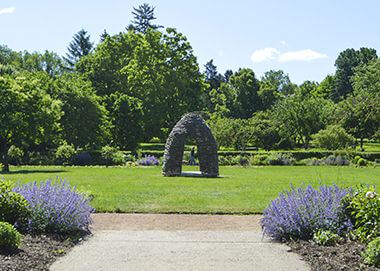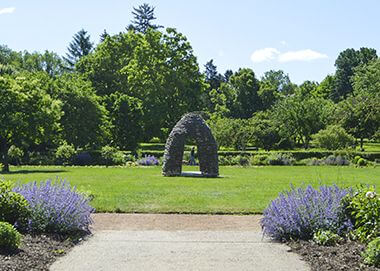It’s the time of the year again to get outside and enjoy some beautiful flowers! After being huddled up inside from the cold and COVID we all need to take the time to enjoy some beauty. The Twin Cities are host to many beautiful gardens to visit, or perhaps this year you double your efforts on your own garden.

Gardens
Many of us are familiar with the Minnesota Landscape Arboretum or the Como Zoo and Conservatory that have a multitude of gardens to enjoy. This May how about looking at some lesser-known gardens like the Lyndale gardens and bird sanctuary. The garden started in 1906 when Theodore Wirth, the first Minneapolis Parks Superintendent, made written suggestions to the city about ways to improve the parks near Lake Hiawatha. The actual park has 4 main gardens to inspire visitors. The Minneapolis Park System showcases a variety of gardens for visitors to enjoy, from the formal gardens of Lyndale Park to the naturalistic Eloise Butler Wildflower Garden. Park Board gardeners maintain the gardens with the help of volunteers, while residents can grow their own food and flowers at the community gardens. Click here for a history of the gardens.
The perennial garden in Lyndale gardens borders lake Harriet. This garden was built in 1962-63 when the Phelps (Turtle) fountain was moved from the downtown Gateway to the East end of this garden. Two long perennial borders edge this garden and six annual beds are featured in between.
The Butterfly and Hummingbird Garden features native plant species and cultivars chosen for their ability to attract bees, butterflies, and other pollinators. Very important as our bees and Monarch butterflies are struggling for survival. The garden was awarded the All-America Selections 2009 Exemplary Education Award for MPRB’s continuing work with children interested in gardening. The Butterfly and Hummingbird Garden is adjacent to the Peace Garden and is the site for MPRB’s annual Pollinator Party--A Celebration of Bees. The garden’s meandering border begins near King’s Highway and follows the wood line down towards the Peace Garden. The garden features perennials that are tested over several seasons for hardiness, disease resistance, and other characteristics.
The Peace Garden was originally named the Rock Garden. The bronze sculpture by local artist Caprice Glaser was dedicated in 2006 and is an official International Peace Site. The sculpture illustrates the folding of a peace crane, an ancient craft of origami. Information plaques atop stones around the walking path show how to make a peace crane. The word “peace” is engraved at the base of the stones in 23 languages.
This sculpture represents the international tradition honoring Sadako Saski, a girl who developed cancer from radiation released by the atomic bomb dropped on Hiroshima. She was told of a Japanese legend that people who fold a thousand paper cranes will be granted a wish, she folded over one thousand cranes before her death at age 12.
Peace Garden Bridge
The bridge was installed in October 2009 and is highlighted by decorative copper sasi blocks and inlaid Minnesota granite. The bridge zigzags as Japanese tradition says that evil spirits walk only in straight lines, and the zigzag path will prevent them from following people into their garden retreats. The bridge also features granite peace stones from Hiroshima and Nagasaki, Japan. They were found near Ground Zero in the rubble of the 1945 atomic bomb blast.
Pathway to Peace
A series of seven stone sculptures connecting the East Harriet neighborhood with the Peace Garden. Each one displays words representing the community’s feelings about the meaning of peace.
Rock Geology
The rocks at the Peace Garden are part of a rock unit known as the Oneota Dolomite. Oneota is a river (now known as the Upper Iowa River) in Northeastern Iowa, near where this unit was first described. The Oneota Dolomite is found in various localities in Southeastern Minnesota and in nearby parts of Iowa, Wisconsin, and Illinois. It is especially prominent as the caprock on the bluffs overlooking the Mississippi River near Red Wing. Dolomite (sometimes called dolostone) is a rock that is very similar to limestone and is composed primarily of the mineral dolomite. The chemical composition of the mineral dolomite is calcium magnesium carbonate. Some of the rocks at the Peace Garden contain large pores, called vugs, which were formed after the original sediment was deposited. Some of the vugs are lined with a crust of very small quartz crystals. This crystallized crust was probably deposited by quartz saturated fluid that circulated through the rock. The deposition process is similar to how rock candy is deposited on a stick when it is placed in a glass of water that is saturated with table sugar. Maybe something you can try at home!
Volunteering
All of these gardens are a lot of work and if you’re interested in volunteering you can check out Lyndale Park Garden volunteer opportunities: Men’s & Women’s Garden Club of Minneapolis (MWGCM).
DIY Gardening
Why not try a little 'Do it Yourself' gardening to spruce up your yard or deck? This year you may want to consider visiting the Butterfly and Hummingbird garden to get ideas for your bee and butterfly-friendly plantings! Container gardening is ideal for people that have difficulty bending, stooping, or kneeling, individuals that have mobility issues, and those with little or no garden space. In addition to growing flowers, gardeners limited to a balcony, small yard, or only a patch of sun on their driveway can produce a wide variety of vegetable crops in containers. Seniors that keep their minds and bodies active help them stay independent as long as possible. Children and grandchildren can join in to help while everyone can enjoy the beauty and fruits from the garden. For a more complete look at seniors enjoying container gardening click here.
Enjoy the Gardens!





